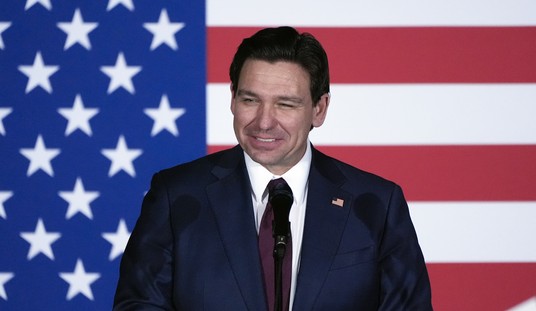Many don’t understand Ronald Coase’s Nobel Prize theorem because of the math. It seems non-sensical. Why should a farmer pay a train line not to run trains? That makes no sense on the surface, but when you delve into the property rights and profitability numbers, it makes perfect sense.
In the Wall Street Journal today, they had an article that illustrates the tangible value of individual property rights and profit versus centrally planned regulations. This is one of the largest differences spanning the two political parties outlooks today.
The author, Terry Anderson writes about the plight of endangered species. Governments of many countries have succumbed to pressure from animal rights groups to enlist quotas or bans on hunting to try and save species. We know that they haven’t worked. Not only have they not worked, but they have markedly increased costs, taken land out of circulation, forced governments to use resources to purchase land that could be diverted to more useful endeavors or simply not spent at all saving taxpayers money.
As South African economist Michael ‘t-Sas Rolfes points out, “Strong property rights and market incentives have provided a successful model for rhino conservation, despite the negative impact of command-and-control approaches that rely on regulations and bans that restrict wildlife use.”
Who could be opposed to environmental entrepreneurship that has successfully propagated endangered species, even if a few animals are hunted so that the populations will be sustained? Priscilla Feral, president of Friends of Animals, is one. She condemns having African animals on U.S. soil.
Though the scimitar-horned oryx went extinct in Africa, Ms. Feral believes the species found on Texas ranches should only live on African reserves, which are neither natural (many of them are fenced) nor sustainable. “I don’t want to see them on hunting ranches,” Ms. Feral said on “60 Minutes” on Jan. 29. “I don’t want to see their value in body parts. I think it’s obscene.”
Recommended
Ms. Feral might think it’s obscene. But there are plenty of people out there that think extinction is obscene too. Why should a government policy enforce her subjective judgement?
Recently, studies of fishing and quotas have shown that private property rights do a better job of saving fish species than public quotas. Fisherman have an incentive to keep the species alive and thriving because they earn a living off of it’s survival. When the tables are turned and quotas are established, everyone tries to beat the system-with economic scarcity ruling the day and not concern for the species survival.
This transcends virtually everything you might think about. Health care, Obamacare, as currently structured is simply one giant centrally planned system that ignores private property rights. We would be much better off with no government regulation than what we have today. The scimitar-horned oryx has a lot in common with the regular Joe that wants to see a doctor. Both will be extinct in their own way with government quotas and centrally planned systems.
Comments About the Economy
Have some good friends at US Trust. They have a great wealth management department. I subscribe to their updates about the economy. They have been a pretty good forecaster over the past year, so I decided to put snippets of this last one out on my blog to see what the community thinks of their thesis going forward. Here you go.
“U.S. CONSUMER HAS STRONGER UNDERPINNINGS THAN PERCEIVED
Incoming U.S. economic data have continued to surprise to the upside across the board, validating our view that domestic economic fundamentals are healthier than perceived. These positive underpinnings came to the fore as soon as the U.S. debt ceiling crisis calmed down, temporary supply chain disruptions unwound, and oil prices self-corrected. A new round of Federal Reserve easing of lending conditions to foreign banks and assurances of indefinite monetary policy accommodation have also helped, but it has been aggressive European Central Bank (ECB) bank lending policy since late November that marked the recent turnaround in global growth prospects.”
I found this take on debt very interesting, and probably correct.
“A low financial obligations ratio reduces the risk that consumers hunker down to pay off debt, hampering credit and economic growth in the process. In fact, excluding government and student loans—which are surging as a result of government policy encouraging such loans—consumer credit is down by $384 billion, or 15%, since its late-2008 peak but has started to grow again. If its past correlation with employment growth, consumer expectations, and real consumer spending is any indication, consumer credit should continue to grow in coming quarters.”
They see improvement in the labor market
“The labor market is improving rapidly and catching up to levels predicted by our leading indicators for employment. Including upward revisions, private-sector jobs grew strongly last year, with
1.9 million net new jobs created and positive momentum into 2012. This gain was partially offset by the largest decline in government payrolls since 1946 (-384,000 jobs). Private sector employment growth tends to lead government payrolls, however, so its gathering strength suggests that smaller public sector payroll offsets are likely ahead (Exhibit 4). If private sector hiring remains strong, the ratio of government workers to private sector workers could gradually decline to its 1999 and 1962 lows by 2015, even if government payrolls stay flat starting next year.”
“our models suggest that the unemployment rate should decline to about 6.5% by year end. Nevertheless, with measures of policy uncertainty still elevated despite a considerable drop from late-summer crisis levels, we are adjusting this forecast higher to around 7.7%.”
On politics
“Against this backdrop, the political center of the U.S. has been hollowed out. That means there is really no figure in the center—or so it seems—that can effectively cajole the two parties to come together and meet in the middle when crafting important pieces of legislation. Neither the President nor the leader of either the House or Senate is up for the job. As a result, Washington has become more polarized and so has the country, with the fierce debate about the one percent versus 99 percent emblematic of a nation more divided than united. And investors be warned: with the start of the presidential election season upon us, the nonsensical rhetoric and silliness courtesy of Washington is about to get worse.”
On the deficit
“The Ugly—U.S. deficits for as far as the eye can see
And speaking of Washington, in the ugly category we put the latest budget deficit figures (Exhibit 10) from the Congressional Budget Office (CBO). According to the CBO, the federal government is expected to print another $1 trillion plus deficit in fiscal year 2012. That would represent the fourth straight year of $1 trillion-plus deficits, which stands in stark contrast to a decade ago, when the government ran surpluses for four consecutive years, from fiscal 1998–01.”
And on China
“U.S. investment in China: Not as much as you think—A common fear among investors is that China is sucking production and jobs from the U.S., leaving America industrially hollowed out and economically high and dry. The mainland, so goes the consensus, has become the “factory to the world,” leaving U.S. workers to flip hamburgers. Reality is quite different. U.S. foreign direct investment (FDI) in China has climbed during the past decade, but a little perspective is in order.
? The $37.7 billion the U.S. sunk into China between 2000 and the third quarter of 2011 equated to only 1.4% of total U.S. FDI flows to the world in the same period.
? U.S. FDI to Ireland, a country slightly larger than West Virginia, was nearly five times that to China in the same period.
? On a historic cost basis, China accounts for only 1.5% of total U.S. foreign investment.
The upshot: China has not attracted as much U.S. investment, absolutely or relatively, as is popularly portrayed.”
All in all a bullish report-except on US deficits. By the way, if they are right about unemployment going to 7.7%, Obama will be in good position and Keynesian economics will be considered the cause.

























Join the conversation as a VIP Member